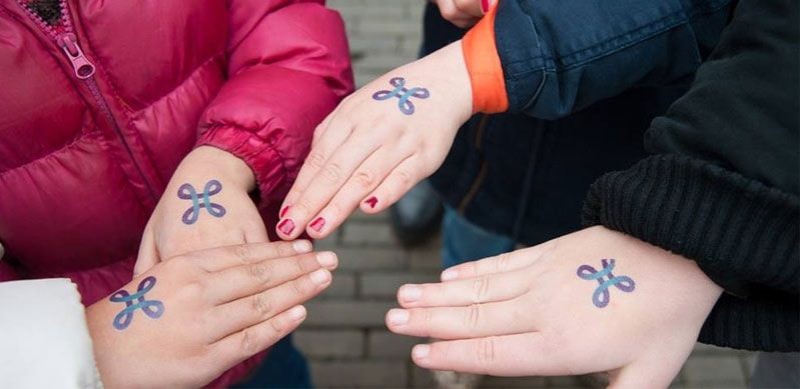Belgian telecom Proximus finds itself in a common situation: It is beginning to outgrow its traditional points-based loyalty program. Though it has been successful with loyalty strategy so far, the company is exploring ways to update its approach to engagement and loyalty without losing the momentum of its current operations.
“Customer experience is key, because we are selling experiences, not products,” says Gauthier Dubois, head of customer loyalty, stimulation, and servicing. “Customers are more demanding than ever about their expectations for a positive, if not superior experience.” Proximus, a provider of mobile and fixed line telephone, Internet, and digital television services, enjoys a market share of about 40 percent in Belgium, including 5.7 million mobile, 1.7 million Internet, and 1.6 million digital TV customers. Its positioning is one of value, not low cost. Key to this value proposition is a focus on customer needs. Its loyalty program has been essential to delivering that.
“Loyalty strategy is a real differentiator,” Dubois says. “I’m convinced that it has improved customer perception and led to positive customer momentum.” He adds that the CEO is committed to customer experience efforts, so much so that top business performance KPIs include customer experience metrics alongside EBITDA and revenue.
The Proximus Premium Club loyalty program has been in place since 1998. It is marketed to high-value customers, though anyone can join. For each euro spent with Proximus, customers earn points that can be exchanged for gifts or discounts. Gifts include free mobile minutes, video on demand downloads, device discounts, charity donations, and vouchers for partner services like movie tickets. One quarter of residential customers are members.
Since its inception, the program’s goal has been to create an emotional bond with customers, maintain a positive image, and reduce churn. These goals are long-term initiatives, requiring consistent interactions with customers that build trust over time. With the program, customers interact with the company positively, instead of just when purchasing services or if something goes wrong. Dubois says customers receive about four to six loyalty program communications and redeem one gift per calendar year.
“If we succeed in delivering a good experience with our loyalty program, that adds to the value perception of the entire brand,” Dubois says. “It helps make the relationship tangible, because customers can relate a good thing to Proximus. It’s a long-term vision. That can be difficult to defend internally, but our results have helped make the business case.”
Dubois says his team’s focus is on demonstrating enablers of business value, rather than specific output. They including email open rates, event participation, gift redemptions and other customer activities.
His team tracks member redemption of prizes, and compares customer-related metrics between loyalty members and non-members. Loyalty club members’ open rates for company communications are twice that of non-members, for example. And customer satisfaction numbers are higher from loyalty club members than from non-members. In fact, Dubois notes that one out of five loyalty club members say they stay with Proximus specifically because of the benefits they receive from the loyalty program. That impact on retention positively affects the bottom line.
Play games, generate loyalty
The Premium Club has been in place for 17 years. In that time, customer expectations, technology, and interaction channels have evolved, while internal cost and ROI pressures have grown. Dubois said execution of its loyalty strategy needed an update. But it didn’t want to risk the effectiveness of the Premium program.
So in 2010, Proximus launched a new, online only program called “Play&Gold” (www.playandgold.be). It serves as an incubator for new initiatives and experiments focused more on engagement and stimulation, instead of just retention. “We have to move from traditional rewards to engagement” in order to stave off the growing competition, Dubois says.
The Play&Gold program is designed to engage prepaid mobile customers, encouraging them to play games. They supply their mobile phone number and receive a code to play for each top-up of at least €15. In the game players dig up gold coins, which can be redeemed for free mobile minutes, SMS messages, or discount vouchers. There’s also a special section called ‘Piratapult’ where players can win valuable prizes such as Netbooks, high-end mobile devices, a barbeque with 30 friends, or travel vouchers of up to €10,000. In return, the company collects members’ phone numbers, emails, dates of birth, and names—data often hard to come by with prepaid customers. More than 30 percent of prepaid customers are monthly active players of the game.
Every two months the company hosts gaming sessions at its Brussels headquarters for top players, and awards big prizes like trips to New York City or other global destinations. “It creates a happening,” Dubois says. “It also creates a buzz on social media.”
Everything is about interaction with Play&Gold, Dubois says. SMS messages and emails are used to send players codes after each top-up, along with special birthday codes, expiration reminders, and notifications if they win contests. In addition, the company actively informs customers about game changes, new gifts, new functionalities, and winners through Facebook posts, targeted emails, and an email newsletter sent out two to three times per year. Event videos and photos are also shared via social media. It keeps the game and brand top of mind.
Proximus also uses the program to gather insight. Members earn coins by taking quizzes about products and services, such as “do you know the price of our XYZ service,” or “what is our coverage range?” It builds awareness and education, and steers customers toward potential upsell and cross-sell opportunities.
With the Play&Gold model, Dubois’ group is better able to make the connection between loyalty membership and growth in ARPU and usage, because it is designed to spur individual activity, not just spend. “The retention impact is difficult to calculate, but it’s easier to connect the dots with stimulus,” he says.
Three lessons in loyalty evolution
The company has begun to incorporate lessons from its Play&Gold model into its postpaid Premium Club operations. It’s difficult to completely revamp the legacy system, but Dubois points to three quick wins to elevate the effectiveness of Premium Club without too much resource strain.
1. Go digital. While the Premium Club runs on a paper model with direct mail, catalogs, and call centers, Play&Gold is all digital, which significantly reduces operating costs. Proximus has begun to migrate Premium members online, increasing the number of email interactions and evolving its communications from paper brochures to dynamic, relevant web content. The company grew its member email database from 30 percent to 80 percent, with a goal of 100 percent. “We want to move to a paperless model,” Dubois says. “We’re even willing to eventually remove people from the program if they don’t use email.”
2. Influence behavior change with rewards. Play&Gold proved that it’s ok to use rewards to influence preferred behavior. For example, there are more opportunities to upsell and cross-sell to members, encourage them to share their activity with friends online, learn about new products and services, and use self-service tools. “We want to reward engagement and behavior of Premium Club members,” Dubois says, which hadn’t been done before.
3. Deliver on customer needs. Since it was a simple spend-based program, the Premium Club previously offered only free minutes or other Proximus-related rewards. With deeper customer knowledge and more robust interactions, the company is extending its catalog to offer a broader variety of gifts, based on communicated member preferences.
Dubois says the company will continue to test different concepts, using the Play&Gold program for pilots. The program will also extend to other channels, Dubois says. Future plans include the ability to redeem points at Proximus brick-and-mortar stores, and more self-service options online. He also hopes to collaborate with other areas of the business to generate new ideas and programs that are consistent enterprisewide.
Dubois contends that a test-and-learn approach is the best way to roll out new initiatives. A poor program is more damaging to customer loyalty than none at all, he argues. “It’s better to offer nothing than to offer something that’s not worthy of the customer’s or the company’s time.” Consider all touchpoints of the loyalty process, from registration and games to fulfillment and rewards. All must create a positive experience.
The Proximus story is not unique. Many companies need to adapt their customer programs in order to stay relevant. Dubois advises others to shift loyalty program focus to engagement, not just points and spend. Otherwise you’ll just be another points program in the mix, not generating the loyalty you set out to earn.
*Proximus is a client of TeleTech

















